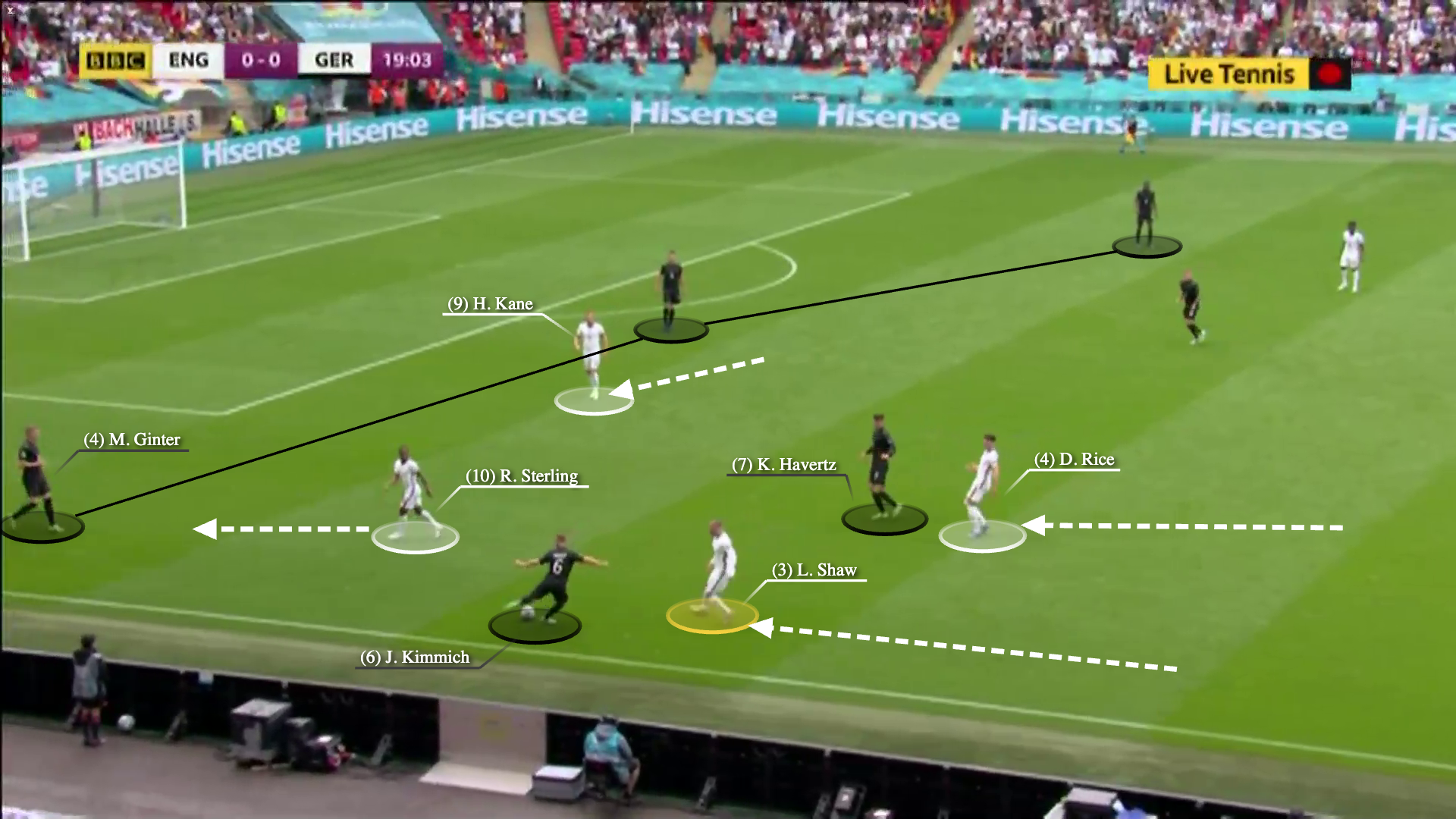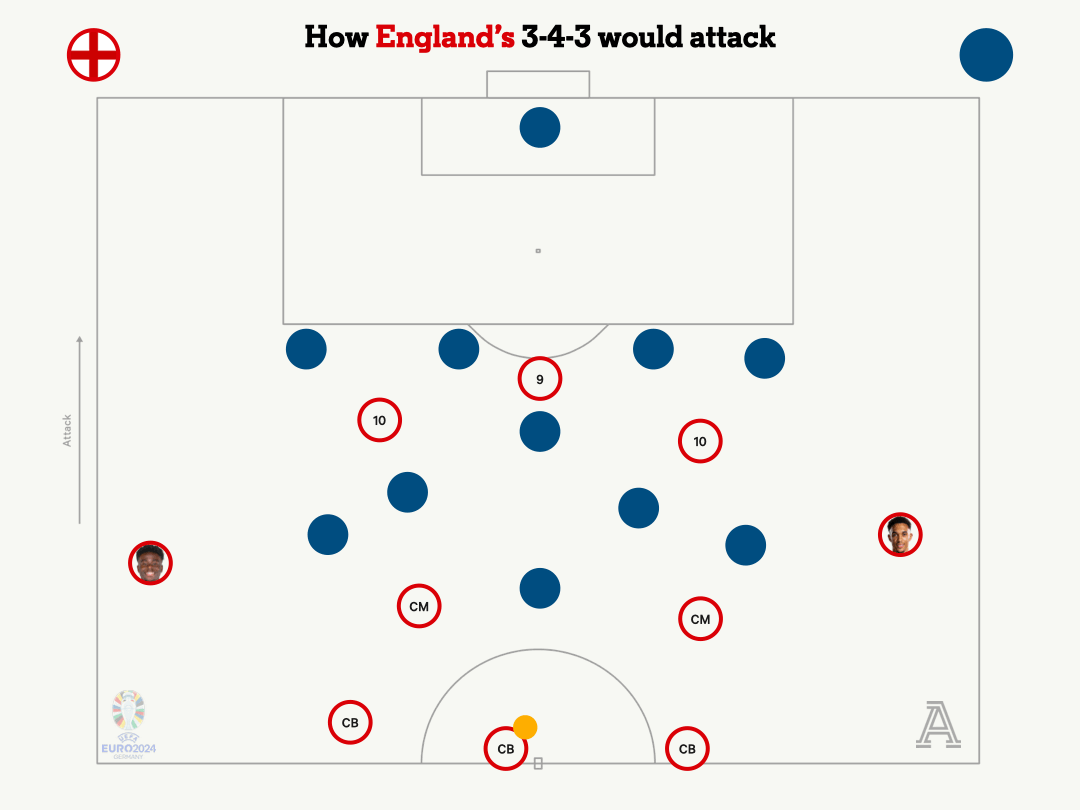Follow live coverage of England vs Slovakia and Spain vs Georgia at Euro 2024 today
Good coaching has, wrongly, become synonymous with innovation: Make different attacking rotations, bring strikers deeper, full-backs inside or centre-backs upfield. Press more aggressively, go man-for-man. Double down on your philosophy and win things your way or lose trying.
Advertisement
Except good coaching isn’t that and has never been. Sometimes the most straightforward solutions are the most appropriate ones. England’s unsolvable, and partially self-created, left-sided problem is that Luke Shaw is still returning from injury and they have played a right-footed player (Kieran Trippier) there. It makes them one-sided, predictable in build-up and reduces Phil Foden’s support.

Shaw is back in full training so may become an option in the knockout stages but it is unlikely that he has the capacity to play four full matches in 15 days (which he would need to if England reach the final). He hasn’t played competitive football since mid-February, and last completed a full 90 minutes almost five months to the day that England face Slovakia in the round of 16.
But even so, England don’t have to play a right-footer there. In Bukayo Saka, they have a player who can excel on that side. Saka is one of the best left-footed right-wingers in the world but he hasn’t always been a right-winger. In fact, he followed the Gareth Bale positional trajectory, developing as a left-back/left wing-back in his academy days at Arsenal before becoming an inverted winger at senior level.
If part of England’s problems in this tournament have been introducing players to unorthodox roles, this change would not be that. Like they did in the Euro 2020 round of 16, England should switch to 3-4-3. Part of that was to match Germany up, but it reinforced England’s defensive base as they mid-blocked in a 5-4-1.
“We know if we pick that system and pick the players we picked, if we don’t win the game we are dead,” said Southgate after the 2-0 win against Germany at Wembley. “We wanted to be, man-for-man, aggressive in our pressure. The wing-backs really did that well and set the tone. We knew the tactical problem that the wing-backs high causes you.”
Advertisement
Here are two occasions, one from either side, of how England pressing with aggressive wing-backs disrupted Germany’s build-up. On each occasion, they created a four-v-three. No 9 Harry Kane cut off inside passes to a centre-back or No 6; the winger (Raheem Sterling or Bukayo Saka) pressed the centre-back, England’s ball-side midfielder (Declan Rice or Kalvin Phillips) jumped tight to Germany’s nearest No 6; the wing-back (Shaw or Kieran Trippier) locked in Germany’s wing-back. In each sequence, Germany were forced long and England recovered possession.


The biggest risk with the system is that England have been wedded to the 4-2-3-1 for so long. Southgate last played a back three in the final game of their 2022 Nations League campaign, in a 3-3 draw against Germany at Wembley, ahead of the World Cup. That was 22 games ago.
Open-mindedness and acceptance to rip up plan A is what makes good tournament coaches. France look different, in personnel, roles and tactics, at every tournament under Didier Deschamps. Lionel Scaloni changed his No 9 and midfield configuration in the group stage of the 2022 World Cup and Argentina went on to win it.
While so much of Southgate’s success has focused on the future, implementing cultural and tactical changes that will outlast him, now he needs to focus on the here and now. To pick a system which lives and dies at this tournament.
This group stage was England’s worst in a major tournament under Southgate for expected goals and final-third regains. They were more passive out of possession than the previous three tournaments, and built up much shorter and more slowly. Tellingly, England attempted more dribbles than in group stages at World Cup 2018/2022 and Euro 2020. It all points to a lack of the “creative solutions” that Southgate continuously referenced throughout qualifying.
Advertisement
Southgate would have been entirely justified to switch to a back three for the group stages, given it is the shape that Serbia and Denmark (their first two opponents) play. It would have been a more suitable shape for England to press from, as England’s deep-defending issues stemmed from issues in trying to press wing-backs with a back-four.
England’s major tournament record with a back three is mixed: four wins, two draws and three defeats. Switching to it would add the defensive control that Southgate wants — “we built this team on clean sheets,” said Declan Rice after the Serbia win.
| Opponent | Tournament | Round | Result |
|---|---|---|---|
Italy | Euro 2020 | Final | 1-1 draw (lost on penalties) |
Germany | Euro 2020 | Round of 16 | 2-0 win |
Belgium | World Cup 2018 | Third-place play-off | 2-0 loss |
Croatia | World Cup 2018 | Semi-final | 2-1 loss |
Sweden | World Cup 2018 | Quarter-final | 2-0 win |
Colombia | World Cup 2018 | Round of 16 | 1-1 draw (won on penalties) |
Belgium | World Cup 2018 | Group-stage | 1-0 loss |
Panama | World Cup 2018 | Group-stage | 6-1 win |
Tunisia | World Cup 2018 | Group-stage | 2-1 win |
Whereas in previous tournaments England have switched to the 3-4-3 for defensive reasons, now it would be for the in-possession uplift.
First, it would allow them to attack with the 3-2-5 shape that most top teams build up in — England’s ‘DNA’ was built upon trying to get the national side(s) to mirror the best club teams.

England’s left side would benefit from a quality crosser and dribbler in Saka, who can go crashing towards the back post zone at crosses from the right. England’s 49 group-stage crosses at World Cup 2022 were split almost perfectly: 25 from the left, 24 from the right. This tournament, they played 36 in their first three games, with only 10 of those from the left.
The system gets nowhere near the maximum out of Saka but more out of the team as a whole. It lets the No 10s drop in to get on the ball, suits Rice making rotations out to the left and puts Kobbie Mainoo into an ideal line-breaking role. Proper width on the left means Phil Foden and Jude Bellingham can play closer to Harry Kane and act as runners beyond him when Kane drops in. Foden especially has looked a little lost with too much freedom in attack.

Playing Trent Alexander-Arnold as a wing-back puts him in more crossing positions, ideal for Kane and Bellingham, and he would have the defensive cover of Kyle Walker behind him. For a team which has lacked attacking cohesion in the final third, putting club-mates closer to each other (Rice and Saka on the left, Walker and Foden on the right) should improve the balance.
Advertisement
Should England make it past Slovakia in the last 16 and Shaw is deemed fit enough to play in later rounds, they can slot him in at left wing-back and put Saka back on the right wing, exactly how they were configured in the Euro 2020 round of 16.
A tactical gamble like this (switching to wing-backs, and using Saka there) would go against most of Southgate’s decisions as England head coach, but if he has learned anything from tournament football it is that good coaches solve problems — however they need to.
(Photo: Chris Brunskill/Fantasista/Getty Images)

